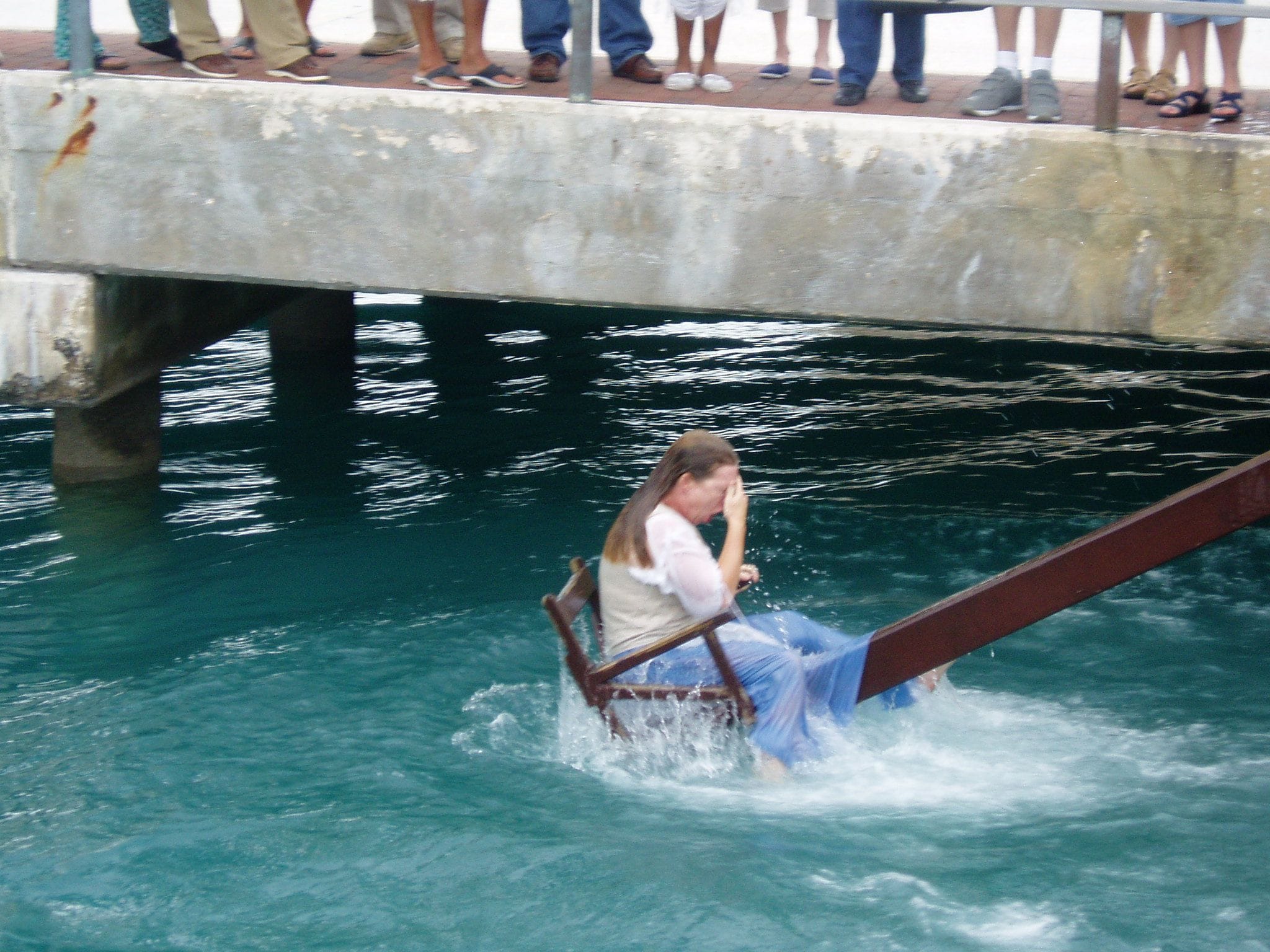Ducking stools: these medieval torture devices were dunked into freezing water to punish those who dared to break society’s rules, primarily women. These contraptions were a dark secret in the history books, chillingly showing how public embarrassment and pain were used to keep voices in check and maintain societal control. Let’s take a dive into the murky depths of the past and uncover the story of the ducking stool and how it reflects the darker side of medieval England.
Ducking Stool Deep Dive: Unveiling the History and Brutality
Imagine a world where speaking your mind, especially as a woman, could land you strapped to a chair and plunged into freezing water in front of a cheering crowd. That’s the dark reality many women faced in Medieval England. This wasn’t some playground game; the ducking stool was a brutal tool of social control, mainly used to humiliate and punish anyone deemed troublesome, primarily women who dared to challenge the rigid social rules of the time.
Picture this: a simple wooden chair fastened to a long lever, like a giant seesaw of shame. If a woman was accused of gossiping, arguing too much (imagine being punished for that!), or even practicing witchcraft, the ducking stool was their fate.
This “punishment” was a public spectacle, a twisted form of entertainment where the accused was dunked repeatedly into a river or pond. The number of dips? Well, that probably depended on the severity of their “crime” or maybe just the mood of the crowd.
The Purpose and Impact of the Ducking Stool
The idea behind this watery torture? Historians suggest it was intended to teach women a lesson, to silence them, to show them their perceived place in a society dominated by men. The chilling message was clear: step out of line and face the consequences, a terrifying combination of physical suffering and social humiliation.
The use of the ducking stool was deeply intertwined with the witch hunts that plagued Europe. Accused witches were often subjected to this horrific ordeal, their supposed guilt or innocence determined by whether they sank or floated.
The Decline of a Brutal Practice
Thankfully, as ideas around reason and individual rights started to take hold, the ducking stool fell out of favor. People began to see it for what it truly was: a cruel and unusual punishment. By the 18th century, this barbaric practice had largely disappeared, a testament to the shifting social landscape.
Though the ducking stool is gone, it remains a chilling reminder of the oppression women faced and the dangers of unchecked power. It serves as a stark symbol of how easily fear and prejudice can twist justice into something dark and inhumane.
Deciphering the Ducking Stool: When and Why its Use Declined
It’s wild to think that the ducking stool, a device used to silence and punish women for simply speaking their minds, persisted for centuries, mostly in England. They called these women “scolds,” which sounds almost silly now. But back then, it was a serious accusation, enough to get a woman publicly humiliated and potentially hurt. Some women probably even drowned from this awful practice.
Thankfully, people eventually started to realize how cruel this was. By the 1700s, ideas about human rights and fairness were spreading, and folks weren’t so keen on watching their neighbors get tortured anymore.
The official story is that the last ducking stool dunking went down in England sometime in 1817. That’s over 200 years ago, which feels like a win for humanity. It seems people finally realized that locking folks up or finding other, less barbaric punishments made more sense.
Looking back on things like the ducking stool reminds us how far we’ve come in terms of treating everyone with respect, even when they disagree with us. It’s a good reminder to speak up against injustice and keep fighting for a world where everyone’s voice can be heard without fear.
Unlocking “Dunking Punishment”: Your Guide to Outperforming the Competition
What is Dunking Punishment?
Picture this: a bustling marketplace in the heart of medieval times. Amongst the merchants and townsfolk, a spectacle unfolds – a woman, bound and helpless, is repeatedly plunged into a freezing cold pond or river. This, my friends, is what they call “dunking punishment,” a practice that was as cruel as it was public.
Who Was Targeted and Why?
Now, you might be wondering, what on earth would land someone in that soggy situation? The answer, sadly, is often something as simple as being outspoken or disagreeing with a man. You see, back then, women who spoke their minds or didn’t fit the mold were often labeled “scolds.” This wasn’t an official title, mind you, but a way to discredit and silence them.
The Instrument of Misery: The Ducking Stool
The instrument of their misery? A contraption called a “ducking stool.” Imagine a chair on the end of a seesaw, designed to dunk its unfortunate occupant into the water. And it wasn’t just a quick dip; they’d get dunked again and again, leaving them shivering, humiliated, and sometimes even injured.
A Time of Control and Oppression
It’s hard to believe something so brutal was commonplace, but this type of punishment reached its peak during the 16th and 17th centuries. It was a time when men held all the power, and keeping women in line, often through fear and public humiliation, was the norm.
A Fading Practice, But Not a Forgotten One
Thankfully, as time marched on and ideas about justice evolved, the dunking stool became a thing of the past. By the 18th century, people were turning towards more humane punishments. But the memory of the ducking stool still serves as a chilling reminder of how easily power can be misused, especially against those who dare to speak out.
Echoes in the Present
The truly disheartening part? While the actual dunking stool might be gone, the urge to publicly shame and silence those who challenge the status quo? That, unfortunately, is something that still exists in different forms today. It reminds us to stay vigilant and protect freedom of expression, ensuring everyone’s voice can be heard without fear of such archaic and cruel treatment.
Want to Explore More About History’s Enigmas?
If you’re curious about the life of the man who carved a way through a mountain with just a hammer and chisel, read all about Dashrath Manjhi.
Looking for an adventure? Get all the details about the mysterious Derinkuyu Underground City Map.
What do you know about the Drone North Sentinel Island? Click to find out about this unique place that you might not know.
- SYBAU See You Baby Meaning: Gen Z Slang Evolves - July 1, 2025
- Unlock Your Inner Youth: Lifestyle Secrets for a Vibrant Life - July 1, 2025
- Decode SYBAU Meaning: Gen Z Slang Explained - July 1, 2025






